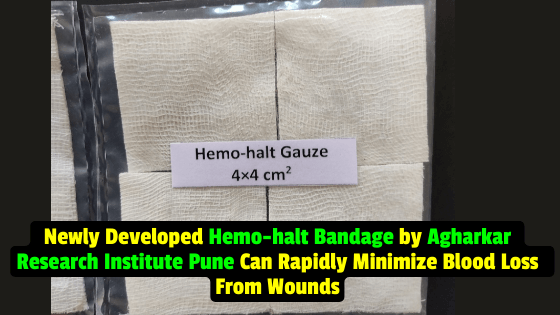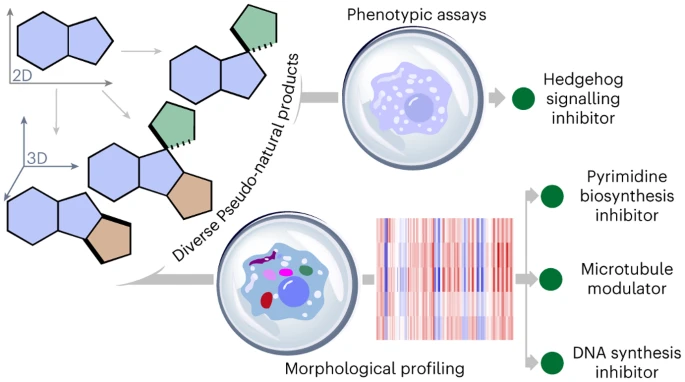Uncontrolled bleeding is the leading cause of traumatic death during accidents or injuries in both military and civilian populations worldwide. A new bandage containing chitosan (a natural polymer that stops bleeding) and agonist (a substance that improves clotting) nanoparticles can significantly reduce wound blood loss.
The hemostatic gauze has the added benefit of being easily removed from the injury site. The indigenous bandage will substitute for foreign brands such as Celox, Hem-Con, Chitoclot, and others. Soft gels that are hemostatic and can be applied to soft tissues and organs are also being developed.
- Hemo-halt bandage incorporates chitosan and agonist nanoparticles for rapid hemostasis
- Chitosan is a natural glucosamine-containing polymer that controls bleeding.
- An agonist is a substance that improves clotting.
- The synergistic effects of combining chitosan and agonist nanoparticles result in highly efficient blood clotting ability.
- Hemostatic gauze has the added advantage of the ease of removal from the injury site.
- GLP studies have been undertaken for commercialization
- Indigenous bandages will be an import substitute for foreign brands.
- Hemostatic soft gels are also being developed for soft tissue and organ application.
A new bandage, called the Hemo-halt bandage, has been developed by the MACS-Agharkar Research Institute, an autonomous institute of the Department of Science and Technology (DST) that can rapidly minimize blood loss from wounds. The bandage contains chitosan, a natural polymer that halts bleeding, and agonist nanoparticles, a substance that improves clotting.
Uncontrolled hemorrhage is the leading cause of traumatic death during accidents or injuries among the military and civilian populations. Severe bleeding triggers trauma due to shock, hypothermia, coagulopathy, tissue damage, and organ failure that often causes mortality. Therefore, efforts for early hemorrhage control are important to prevent disability or death during severe blood loss. Though critical care guidelines recommend topical hemostatic agents in the form of pads, patches, bandages, or gel applications for early control of bleeding, most of these are inadequate in halting heavy blood loss. Conventional physical hemostatic agents like bone wax and gelatin foam, biological agents such as bovine thrombin and fibrin sealants, and synthetic agents including cyanoacrylates and glutaraldehyde cause inflammation, viral infection and tissue toxicity. Considering these limitations, developing effective and safe dressing for hemorrhage control occupies high significance for both civilian and battlefield populations.
Chitosan is a natural glucosamine-containing polymer that controls bleeding due to its cationic nature and hydrogel-forming ability that leads to the concentration of erythrocytes and platelets in the injury site. Commercial chitosan preparations like Celox, a lightweight chitosan foam powder produced by bubbling, and Hem-Con, chitosan-coated bandages, are approved by the FDA and are in use for hemorrhage control by the US army. However, these wound dressings show variable performances due to a lack of stabilization of blood clots, mechanical strength, lack of porosity, and a tendency for adherence to wound surface. In the newly developed homeostatic bandage, the synergistic effects of combining chitosan and agonist nanoparticles resulted in the highly efficient blood clotting ability.
The Hemo-halt bandage has the added advantage of ease of removal from the injury site. The GLP studies have been undertaken for this product which will help in commercialization. The indigenous bandage will be an import substitute to foreign brands like Celox, Hem-Con, Chitoclot, etc., promoting the make-in-India effort. Hemostatic soft gels are also being developed that can be applied to soft tissues and organs.
Q: What is the Hemo-halt bandage, and how does it work?
A: The Hemo-halt bandage is a newly developed bandage that contains chitosan, a natural polymer that halts bleeding, and agonist nanoparticles, a substance that improves clotting. It can rapidly minimize blood loss from wounds by reducing blood loss before treatment, saving lives, and reducing disabilities on the battlefield. It also contributes to the reduction in hospitalization costs.
Q: What is the leading cause of traumatic death during accidents or injuries among military and civilian populations?
A: Worldwide, uncontrolled hemorrhage is the leading cause of traumatic death during accidents or injuries among the military and civilian populations. Severe bleeding triggers trauma due to shock, hypothermia, coagulopathy, tissue damage, and organ failure that often causes mortality.
Q: How does chitosan control bleeding?
A: Chitosan controls bleeding due to its cationic nature and hydrogel-forming ability, leading to the concentration of erythrocytes and platelets in the injury site.
Q: What advantages of the Hemo-halt bandage over other commercial chitosan preparations?
A: The Hemo-halt bandage has the advantage of the ease of removal from the injury site, and the synergistic effects of combining chitosan and agonist nanoparticles result in highly efficient blood clotting ability. While commercial chitosan preparations like Celox, a lightweight chitosan foam powder produced by bubbling, and Hem-Con, chitosan-coated bandages, are approved by the FDA, they show variable performance due to lack of stabilization of blood clots, mechanical strength, lack of porosity, and a tendency for adherence to wound surface.




